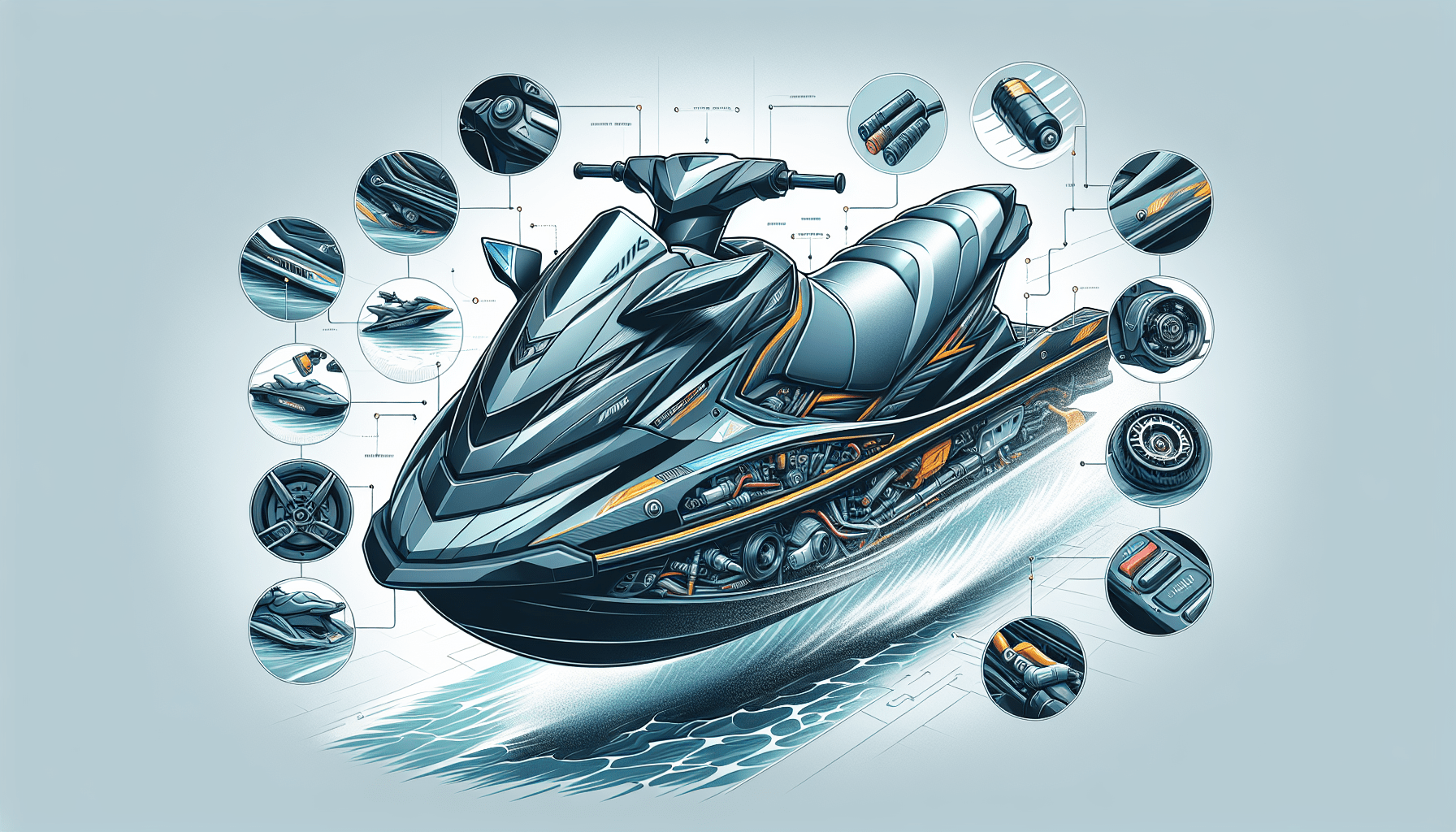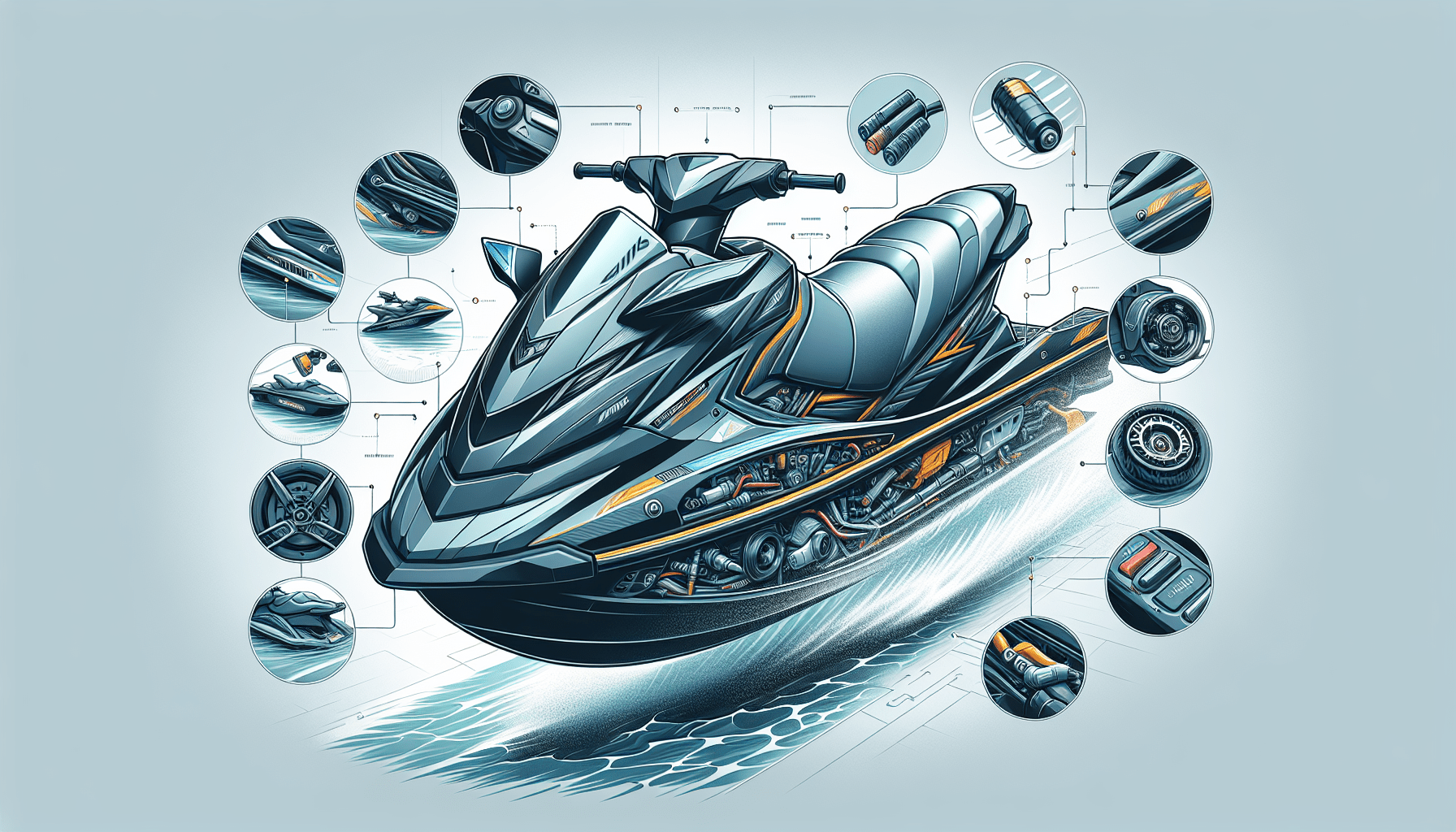What Type Of Vehicle Is A Jet Ski?

Are you curious about what type of vehicle a jet ski is? Well, look no further because A2Z Powersport is the go-to company that knows all about jet skis and the industry. If you’re in the mood for some fun and excitement out on the water, renting a jet ski is the perfect choice. A2Z Powersport, located in Orange Beach, AL at the Fort Morgan Marina, offers a wide selection of jet skis for rent. Whether you’re a beginner or an experienced rider, they have the perfect jet ski to suit your needs. So why wait? Contact A2Z Powersport today at (954) 296 1862 or bookings@a2zpowersport.com and get ready for an unforgettable adventure on the water!
Overview of Jet Skis
Jet skis, also known as personal watercraft (PWC), are lightweight and highly maneuverable watercraft that provide exhilarating rides on lakes, rivers, and oceans. They offer a unique way to experience the water, combining elements of speed, agility, and thrill. Whether for recreational purposes, professional racing, or emergency operations, jet skis have become increasingly popular in the water sports industry. In this comprehensive article, we will explore the definition, history, types, features, uses, safety considerations, maintenance, renting, purchasing, training, licensing, and environmental impact of jet skis.
Definition of a jet ski
A jet ski is a small watercraft that is powered by a jet propulsion system, typically a small gas engine. Unlike traditional boats, jet skis do not have external propellers or rudders. Instead, they draw water into the engine and expel it forcefully through a nozzle at the rear, propelling the craft forward. Steering is achieved by redirecting the jet of water, providing quick and responsive turns. Jet skis are designed to be ridden by one or two people and are capable of reaching high speeds on the water.
History of jet skis
The concept of the jet ski can be traced back to the early 1970s when Clayton Jacobson II, an Australian motocross enthusiast, created the first prototype. It was initially intended as a surfboard with an outboard motor, but Jacobson soon realized the potential for a standalone watercraft. In collaboration with Bombardier Recreational Products (BRP), the first commercially successful jet ski, the “Sea-Doo,” was launched in 1973. Over the years, jet skis have evolved in terms of design, performance, and safety features, becoming a staple in the world of water sports.
Types of Jet Skis
Jet skis come in various types, each catering to different preferences and purposes. Here are the main types of jet skis:
Stand-up jet skis
Stand-up jet skis are the original type of jet ski that requires the rider to stand while operating the craft. They are smaller, more agile, and typically used for racing or performing tricks on the water. Stand-up jet skis offer a more physically demanding and adrenaline-pumping experience, making them popular among thrill-seekers and professional riders.
Sit-down (recreational) jet skis
Sit-down jet skis, also known as recreational jet skis, are designed for leisurely rides and are more comfortable for longer durations. These jet skis have a seat or seats and offer a more stable and relaxing experience. They are suitable for riders of all skill levels, as they provide a smoother ride and easier maneuverability.
Performance jet skis
Performance jet skis are the sports cars of the jet ski world. They are built for speed, agility, and maneuverability, providing an exhilarating experience for the rider. These jet skis often feature more powerful engines, specialized hull designs, and advanced technology to enhance performance on the water. Performance jet skis are popular among experienced riders who enjoy pushing the limits of speed and precision.
Touring jet skis
Touring jet skis are designed for longer trips and offer increased comfort and storage space. They are equipped with features such as adjustable seats, extra storage compartments, and smoother rides to ensure optimal comfort during extended rides. Touring jet skis are favored by those who enjoy exploring new places on the water and embarking on adventurous journeys.
Features of Jet Skis
When considering a jet ski, it’s essential to understand its key features, which greatly impact its performance and user experience. Here are the features to consider:
Size and dimensions
Jet skis come in various sizes, ranging from compact stand-up models to larger touring models. The size and dimensions of a jet ski determine its stability, maneuverability, and storage capacity. Smaller jet skis are typically more agile but offer less space, while larger ones provide increased stability and room for multiple passengers or cargo.
Engine and horsepower
The engine is the heart of a jet ski and plays a significant role in its performance. Jet ski engines are typically two-stroke or four-stroke, with varying horsepower ratings. More powerful engines allow for faster acceleration and higher top speeds, while less powerful engines are suitable for beginners or riders who prefer a more relaxed pace.
Design and construction
Jet ski designs vary in terms of hull shape, weight distribution, and materials used. Hull shapes can range from flat-bottomed for better stability to V-shaped for increased maneuverability. Construction materials such as fiberglass or polyethylene impact the craft’s durability, weight, and resistance to water damage.
Control and maneuverability
Jet skis offer intuitive controls to ensure easy maneuverability on the water. These controls include handlebars or steering wheels for steering, throttle levers for acceleration, and various buttons or switches to control additional features. Jet skis with responsive controls allow riders to navigate turns, waves, and obstacles with precision.
Uses of Jet Skis
Jet skis serve a wide range of purposes, making them versatile watercraft suitable for various activities. Here are some of the primary uses of jet skis:
Recreational purposes
Jet skis are immensely popular for recreational purposes, providing hours of fun and enjoyment on the water. Riders can cruise along coastlines, explore hidden coves, or engage in water sports like wakeboarding, tubing, or jet ski races. Jet skis offer a thrilling and memorable experience for individuals, families, and groups of friends seeking adventure and excitement.
Professional racing and competitions
Jet ski racing has gained significant popularity around the world, with organized events and championships attracting skilled riders. Racing jet skis are specially designed for high-performance and agility, with modifications to the hull, engine, and suspension. The competitive nature of jet ski racing presents an opportunity for adrenaline junkies to showcase their skills and compete against other top riders.
Rescue and emergency operations
Jet skis play a vital role in rescue and emergency operations, particularly in coastal areas and bodies of water where traditional boats may not be accessible. Their speed, maneuverability, and shallow water capability make them effective tools for lifeguards, coastguards, and other first responders to reach individuals in distress quickly. Jet skis can navigate through crowded or rough waters to provide assistance and perform rescues promptly.
Safety Considerations
Safety should always be a top priority when operating a jet ski. Here are some important safety considerations to keep in mind:
Wearing a life jacket
Wearing a properly fitted life jacket is essential for personal safety while riding a jet ski. Life jackets ensure buoyancy and can potentially save lives in the event of an accident or unexpected fall into the water. It is crucial to choose a well-fitting and Coast Guard-approved life jacket that is suitable for the rider’s weight and size.
Following local regulations and laws
Before taking a jet ski out on the water, it is important to familiarize yourself with the local regulations and laws governing the use of personal watercraft. Speed limits, no-wake zones, and restricted areas should be adhered to for the safety of other watercraft, wildlife, and yourself. Additionally, understanding right-of-way rules and navigation guidelines will help prevent accidents and maintain a safe riding environment.
Maintaining proper distance from other watercraft
Maintaining a safe distance from other boats, jet skis, and swimmers is paramount to prevent collisions and accidents. Jet skis are highly maneuverable but can still pose a risk if proper distance is not maintained. It is important to be vigilant and aware of your surroundings, especially in busy or crowded waterways. Observing speed limits and practicing defensive riding will contribute to a safer and more enjoyable experience.
Avoiding reckless behavior
Reckless behavior on a jet ski can lead to accidents, injuries, and damage to property or the environment. It is important to ride responsibly and avoid actions such as excessive speed, sudden turns, or erratic maneuvers that may endanger yourself and others. Being considerate of other water users and respecting the marine environment will contribute to the overall safety and sustainability of jet skiing.
Maintenance and Care
Proper maintenance and care are crucial for ensuring the longevity and performance of a jet ski. Here are some maintenance tasks to consider:
Regular engine maintenance
Regular engine maintenance is essential to keep a jet ski running smoothly. This involves periodic oil changes, checking and replacing spark plugs, inspecting belts and filters, and ensuring proper fuel system functioning. By following the manufacturer’s recommended maintenance schedule and guidelines, potential issues can be identified and addressed before they escalate.
Cleaning and storage
Cleaning the jet ski after each use helps remove saltwater, dirt, and debris that can damage the exterior and components over time. It is important to rinse the jet ski with freshwater, paying close attention to areas susceptible to corrosion. Proper storage is equally important, as exposure to the elements can accelerate wear and tear. Storing the jet ski in a dry and secure location, ideally with a protective cover, will help prolong its lifespan.
Checking for wear and tear
Regularly inspecting the hull, steering components, throttle, handlebars, and other parts for wear and tear is essential for maintaining a safe and reliable jet ski. Loose or damaged components should be repaired or replaced promptly to prevent potential malfunctions or accidents. It is advisable to consult the manufacturer’s manual or seek professional assistance if any issues or concerns arise.
Inspecting fuel and oil levels
Before each use, it is important to check the fuel and oil levels of the jet ski. Ensuring an adequate amount of fuel is essential for a longer ride, while maintaining proper oil levels is crucial for engine lubrication and performance. Following the manufacturer’s guidelines for fuel and oil type, as well as the recommended levels, will contribute to a trouble-free and enjoyable experience on the water.
Renting a Jet Ski
For those who do not own a jet ski or prefer not to invest in one, renting provides an excellent opportunity to enjoy the exhilaration of riding on the water. A2Z Powersport, located at Orange Beach, AL, offers top-notch jet ski rentals and exceptional customer service. Here’s why A2Z Powersport is the go-to company for jet ski rentals:
A2Z Powersport as a reputable rental company
A2Z Powersport has established a strong reputation in the jet ski rental industry, providing high-quality watercraft and top-notch customer service. With years of experience and a commitment to customer satisfaction, A2Z Powersport ensures a safe and enjoyable experience for all riders.
Benefits of renting from A2Z Powersport
By renting from A2Z Powersport, you gain access to well-maintained, reliable jet skis that are regularly inspected and serviced. The rental process is hassle-free, with flexible options to suit your schedule and preferences. A2Z Powersport offers competitive pricing, clear rental agreements, and comprehensive safety instructions to ensure a smooth and memorable ride.
How to book a jet ski rental
Booking a jet ski rental with A2Z Powersport is quick and easy. Simply contact A2Z Powersport via email at bookings@a2zpowersport.com or call (954) 296 1862 to check availability and make a reservation. Their friendly and knowledgeable staff will guide you through the rental process, answer any questions you may have, and provide all the necessary information for a successful rental experience.
Buying a Jet Ski
If you are considering purchasing a jet ski, there are several factors to consider before making your decision:
Factors to consider before purchasing
Before buying a jet ski, think about your intended use, experience level, budget, and storage capabilities. Assessing your needs and preferences will help narrow down the options and select a jet ski that aligns with your requirements. Additionally, consider any additional costs such as insurance, maintenance, and accessories when determining your budget.
Researching different jet ski models
Researching various jet ski models is crucial to determine which one best suits your needs. Look into different manufacturers, models, and their specifications, including engine size, horsepower, features, and pricing. Reading online reviews, discussing with experienced riders, and visiting dealerships or boat shows can provide valuable insights into the performance and reputation of different models.
Determining budget and financing options
Establishing a budget for your jet ski purchase is important to identify a suitable price range. Consider whether you will be paying in full or financing the jet ski through a loan. Exploring financing options, interest rates, and terms from reputable lenders will allow you to make an informed financial decision.
Looking for reputable sellers
When purchasing a jet ski, it is crucial to buy from a reputable seller. Research local dealerships, trusted online marketplaces, or certified pre-owned sellers to ensure a legitimate purchase. Take the time to inspect the jet ski, request maintenance records, and ask for a test ride to evaluate its condition and performance. Doing due diligence will help avoid potential scams and ensure a satisfactory purchase.
Training and Licensing
Proper training and licensing are essential for safe jet ski operation and preventing accidents. Here are the key considerations for training and licensing:
Importance of proper training
Even if you have prior experience with watercraft, it is highly recommended to undergo proper jet ski training. Training courses focus on safety practices, rules of the water, basic riding skills, emergency procedures, and other essential knowledge to ensure responsible and confident jet ski operation. Training enhances your understanding of the craft, enhances your skills, and promotes safe and enjoyable experiences on the water.
Obtaining a valid jet ski license
Acquiring a valid jet ski license demonstrates your competence and compliance with local regulations. Licensing requirements may vary depending on the jurisdiction, but typically involve completing a written exam and a practical test. These exams cover topics such as safety regulations, navigation rules, and general knowledge of jet skis. Obtaining a license showcases your commitment to operating a jet ski responsibly and within the law.
Completing safety courses
In addition to basic training, participating in safety courses or workshops can further enhance your jet ski skills and knowledge. These courses focus on defensive riding techniques, emergency procedures, and handling unexpected situations on the water. By honing your skills through specialized safety courses, you can improve your ability to navigate in various conditions, avoid potential hazards, and respond effectively to emergencies.
Practicing responsible riding
Even with proper training and licensing, responsible riding is an ongoing commitment. Always obey local regulations, navigation rules, and speed limits. Maintain a safe distance from other watercraft, swimmers, and wildlife. Stay alert, avoid distractions, and be mindful of weather conditions. By practicing responsible riding, you contribute to a safer and more enjoyable environment for all water users.
Environmental Impact
Like any recreational activity, jet skiing can have environmental impacts that should be considered and minimized. Here are some key considerations for reducing the environmental footprint of jet skiing:
Effects on marine life and habitats
Jet ski use can potentially disrupt marine life and their habitats, especially in shallow or sensitive areas. Avoid riding near seagrass beds, coral reefs, or other vulnerable ecosystems where contact or disturbance can cause damage. Be cautious of wildlife, such as dolphins or manatees, and give them a wide berth to avoid interrupting their natural behaviors.
Reducing pollution and fuel consumption
To reduce pollution and fuel consumption, consider using environmentally friendly practices. Opt for four-stroke engine models, which are generally more fuel-efficient and emit fewer pollutants compared to two-stroke engines. Refuel responsibly to avoid spills and properly dispose of all waste, including oil or fuel containers, in designated areas. Minimizing idling time and avoiding excessive acceleration can also contribute to reducing fuel consumption and air pollution.
Adhering to eco-friendly practices
Incorporate eco-friendly practices into your jet skiing routine to minimize environmental impact. Avoid excessive noise and limit noise pollution by following noise regulations and using quieter watercraft models. When exploring coastal areas, respect nesting birds and their habitats by keeping a safe distance. Consider participating in beach and water clean-ups to contribute to the preservation of the marine environment and its aesthetic appeal.
Participating in beach and water clean-ups
Support local initiatives and organizations dedicated to preserving the marine environment by participating in beach and water clean-ups. These activities help remove litter, debris, and pollutants that can harm marine life and contribute to water pollution. By actively showing your commitment to environmental stewardship, you can help maintain the beauty of our waterways and ensure their sustainability for future generations to enjoy.
In conclusion, jet skis offer an exciting and thrilling way to enjoy the water. Understanding the different types, features, uses, safety considerations, maintenance, renting, purchasing, training, licensing, and environmental impact of jet skis is crucial for a safe, responsible, and enjoyable experience. Whether you choose to rent or buy, practicing proper care, adhering to safety guidelines, and being mindful of the environment will contribute to a meaningful and sustainable jet skiing journey. Remember, A2Z Powersport is your trusted partner in jet ski rentals, offering top-quality watercraft and exceptional service to make your adventure on the water unforgettable.








